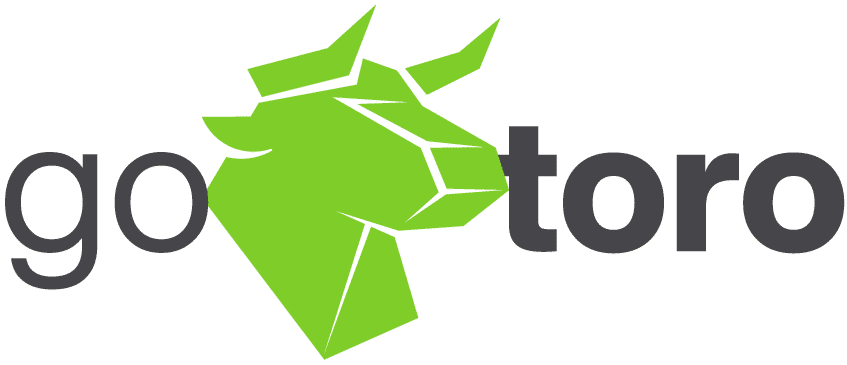In the digital age, the power of referral recruitment programs cannot be overstated. As businesses strive for growth and reach in an increasingly competitive marketplace, leveraging personal networks through referrals has emerged as a key strategy. This approach not only taps into the trust and credibility inherent in personal recommendations but also significantly amplifies a company’s visibility and attractiveness to potential new hires. Over the years, referral programs have evolved, moving beyond simple word-of-mouth endorsements to sophisticated digital campaigns that harness the power of social media and online communities. This evolution has transformed referral recruitment programs into a vital component of modern hiring strategies, enabling organizations to access a wider, yet more targeted, pool of candidates through the networks of their current employees and business associates.
Leveraging Social Media for Organic Reach

A. Choosing the Right Platforms for Your Audience
The success of a referral recruitment program heavily relies on identifying and engaging with the right audience on social media. Different platforms cater to varied demographics and professional networks, making the choice of platform a crucial first step. For instance, LinkedIn stands out as a premier network for professional connections and industry-related content, making it ideal for reaching professionals across various sectors. On the other hand, platforms like Instagram and Twitter (X) may be more suitable for companies targeting younger demographics or those in creative industries. Facebook is a prime platform for referral marketing, offering features that simplify content sharing with friends and family. Tailoring your approach to fit the unique environment of each platform ensures that your referral recruitment messages resonate with the right audience, thereby increasing the likelihood of attracting qualified candidates.
B. Engaging Content That Encourages Sharing
The cornerstone of maximizing the reach of your referral recruitment program through social media is the creation of engaging content that encourages sharing. This involves crafting compelling messages and visual content that not only highlights the benefits of your referral program but also resonates with your target audience’s values and interests. Incorporating hashtags, engaging in trending topics, and participating in social media challenges can dramatically increase the visibility of your referral program. By creating content that people are eager to share, you tap into the exponential power of social networks, allowing your message to spread far beyond your immediate followers. This approach not only elevates the profile of your referral recruitment program but also positions your company as an attractive employer in the digital landscape.
Building a Strong Employer Brand

A. Showcasing Company Culture
A pivotal element of a successful referral recruitment program is the ability to showcase your company’s culture. Highlighting what makes your organization unique and a great place to work can significantly attract potential advocates. Sharing employee testimonials and offering a glimpse into the daily operations and behind-the-scenes activities are excellent strategies for building trust and authenticity. When current employees share positive experiences and insights into the supportive, dynamic, and inclusive workplace culture, it naturally encourages them to participate in the referral recruitment program. By effectively communicating your company culture, you not only enhance your employer brand but also motivate your workforce to become brand ambassadors, eager to refer like-minded individuals who will thrive in your environment.
B. Demonstrating Value Alignment
The core values and mission of your company are the heartbeat of your referral recruitment program. Clearly communicating these values and demonstrating how they are embedded in your operations and decision-making processes can significantly resonate with both your current employees and potential candidates. When there is a clear alignment between an individual’s personal values and the company’s mission, it fosters a deep sense of belonging and loyalty. This alignment encourages employees to actively participate in the referral recruitment program, knowing they are contributing to a purpose they believe in. As a result, your referral recruitment program becomes a powerful tool for attracting individuals who are not only skilled but also passionate about what your company stands for, thereby enriching your organizational culture and driving long-term success.
Creating a Seamless Referral Experience

A. Simplifying the Referral Process
An essential component of an effective referral recruitment program is ensuring the referral process is as seamless and straightforward as possible. Simplification means removing any barriers that might discourage participation, such as complicated forms or unclear instructions. Implementing user-friendly tools and platforms that facilitate easy submission of referrals can significantly increase program participation. Providing clear guidelines and support at every step of the referral process reassures employees and external referrers that their contributions are valued and taken seriously. A streamlined process not only enhances the user experience but also encourages ongoing engagement with your referral recruitment program, leading to a continuous influx of high-quality candidates.
B. Offering Creative and Compelling Incentives
While the intrinsic motivation of contributing to the company’s success is a significant driver, creative and compelling incentives can further enhance participation in your referral recruitment program. Beyond traditional monetary rewards, consider designing incentive programs that offer unique and personalized rewards. Examples include additional days off, experiences (such as travel or dining experiences), professional development opportunities, and charitable donations in the referrer’s name. These types of rewards not only acknowledge the effort put into making a successful referral but also align with the diverse values and interests of your employees. By offering incentives that go beyond monetary compensation, you underscore the value of each referral and foster a culture of appreciation and recognition within your referral recruitment program.
Crafting Referral-Friendly Content
A. Educational Content That Empowers
An integral part of enhancing your referral recruitment program involves creating educational content that empowers your employees and external advocates. This means developing resources that equip them with the knowledge and confidence to understand, discuss, and endorse your products or services effectively. Webinars, tutorials, and product demos can play a significant role in this educational journey, offering in-depth insights and practical knowledge about what your company offers and why it stands out in the market. By providing these resources, you ensure that your referrers can speak about your company with authority and enthusiasm, significantly boosting the credibility and appeal of your referral recruitment program. Educational content not only helps in creating informed advocates but also demonstrates your company’s commitment to transparency and excellence, making it a more attractive place for potential candidates.
B. Storytelling and Testimonials
Storytelling and testimonials are vital to a referral recruitment program, showcasing your company’s culture and impact through the experiences of employees and customers. These authentic endorsements and user-generated content enhance the program’s appeal and credibility, fostering a sense of community and authenticity. This approach not only attracts potential candidates but also boosts current employee participation, turning your referral program into an engaging platform that attracts individuals aligned with your company’s values.
Integrating Referral Programs with Your Marketing Strategy
A. Cross-Promotion Across Marketing Channels
Integrating your referral recruitment program with your broader marketing strategy amplifies its reach and effectiveness. Cross-promotion across various marketing channels such as email, content, and event marketing ensures a cohesive and consistent message that resonates with both current employees and potential candidates. For instance, incorporating referral program highlights in your company’s newsletter, or creating dedicated content pieces that explain the benefits and successes of the program can significantly boost visibility and engagement. Additionally, leveraging events, both online and offline, to promote your referral program adds a personal touch that can encourage participation. Tips for creating cohesive messaging include maintaining a consistent tone and style that aligns with your brand, as well as using clear and compelling calls-to-action that guide potential referrers on how to get involved. By seamlessly integrating your referral recruitment program into your marketing efforts, you create a synergistic effect that can significantly enhance program uptake and success.
B. Collaborations and Partnerships
Expanding the reach and impact of your referral recruitment program can also be achieved through collaborations and partnerships with other brands or organizations. Partnering with companies that align with your company’s values and target demographic can open up new avenues for promoting your referral program. For example, co-hosting webinars, joint social media campaigns, or cross-promotional offers can introduce your referral program to a broader audience. Strategies for selecting compatible partners include looking for organizations with complementary audiences, shared values, and a commitment to mutual benefit. Careful planning and execution of joint campaigns are crucial to ensure that messaging is aligned and objectives are met. Through strategic collaborations and partnerships, your referral recruitment program can leverage external networks to attract a diverse pool of high-quality candidates.
Monitoring and Measuring Success

A. Defining Success Metrics
An effective referral recruitment program requires a clear understanding of what success looks like. Beyond merely tracking conversion rates, it’s essential to define holistic metrics that capture the program’s overall impact on your hiring process and company growth. These metrics might include the number of referrals received, the quality of candidates referred, the time-to-hire for referred candidates compared to other sources, and the retention rates of employees hired through referrals. Setting realistic and specific goals for your referral program helps in measuring its effectiveness and identifying areas for improvement. For example, aiming to increase the percentage of hires from referrals by a certain amount over a specific period provides a clear target to strive towards.
B. Leveraging Analytics for Insights
To accurately monitor the performance of your referral recruitment program, leveraging analytics is crucial. Utilizing tools and techniques for tracking referrals, candidate quality, and conversion rates enables you to gather actionable insights. These insights can then inform decisions on how to adapt and optimize your referral program for better outcomes. For instance, if data shows that referrals from a particular department tend to result in longer-term employees, you might consider focusing more resources on encouraging referrals from that area. Regularly reviewing and analyzing program data ensures that your referral recruitment program remains dynamic and effective, continuously adapting to meet the evolving needs of your organization and the job market.
Fostering a Culture of Continuous Improvement
A. Encouraging Feedback and Participation
A cornerstone of a successful referral recruitment program is the cultivation of an environment where feedback and participation are actively encouraged. Creating accessible channels for participants to offer their insights and suggestions is crucial. This could take the form of regular surveys, feedback sessions, or a dedicated online forum. Actively listening to this feedback and demonstrating a willingness to incorporate constructive suggestions into the program not only improves its effectiveness but also boosts engagement by making participants feel valued and heard. This approach fosters a sense of ownership among employees and stakeholders, turning them into proactive advocates for the referral recruitment program.
B. Keeping the Program Dynamic
The dynamic nature of the job market and candidate expectations necessitates that your referral recruitment program remains fresh and engaging. Strategies for achieving this include regularly updating the incentives offered to referrers, introducing new content to educate and inform participants about the benefits of the program, and revisiting participation mechanisms to ensure they remain user-friendly and efficient. Seasonal campaigns or themed contests can also inject excitement into the program, encouraging renewed participation and interest. By keeping the program dynamic, you not only sustain existing participant interest but also attract new participants to join your referral recruitment efforts.
In conclusion, a successful referral recruitment program hinges on strategic planning, engaging content, and continuous improvement. By effectively leveraging social media, fostering a strong employer brand, simplifying the referral process, and regularly updating the program’s incentives and content, businesses can create a dynamic and compelling program. The journey to refining a referral recruitment program is ongoing, but with the right approach, it can significantly enhance your ability to attract top talent and achieve sustained growth. Remember, the strength of your program lies in its ability to adapt and evolve in response to feedback and changing market dynamics.


